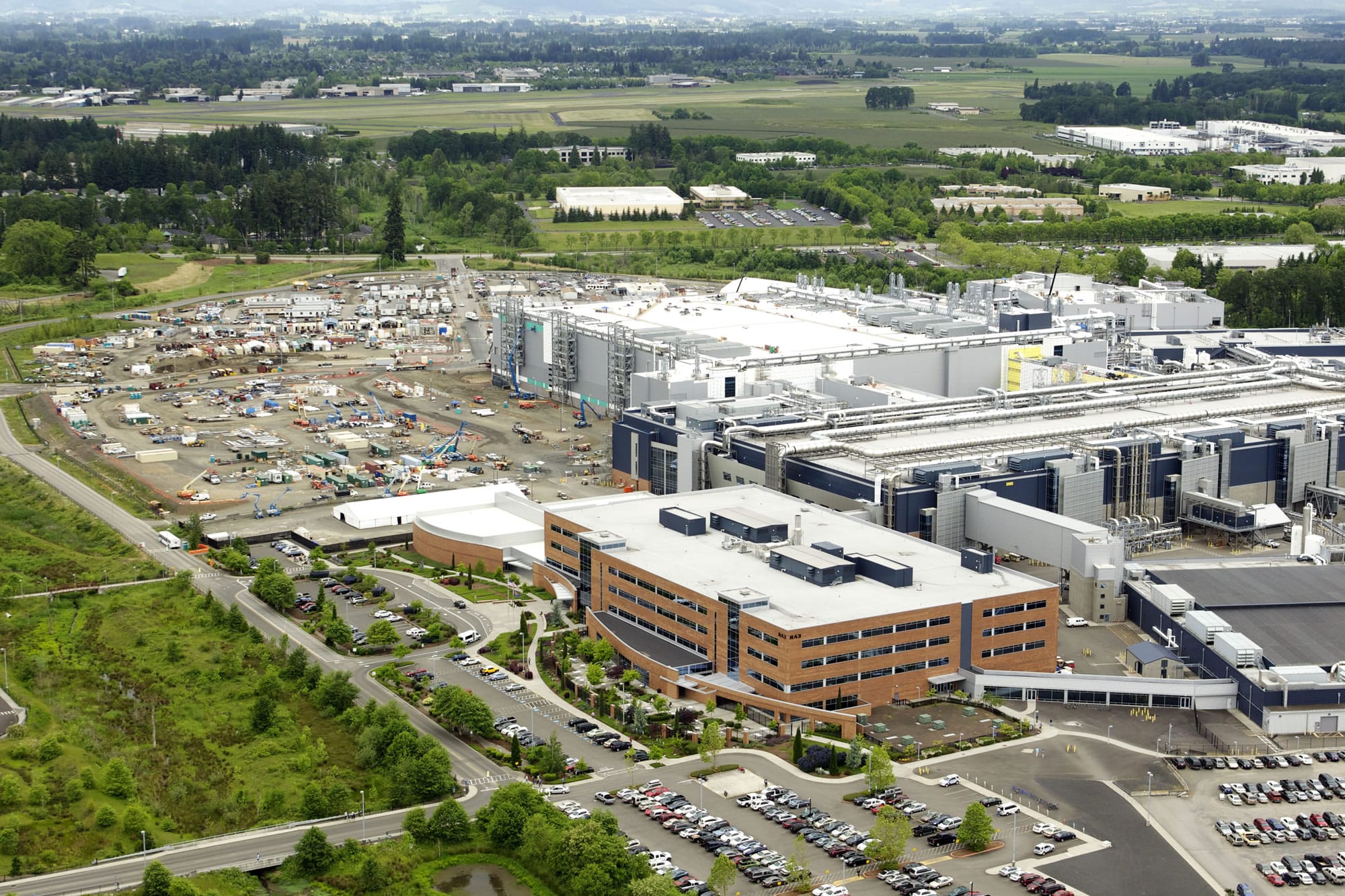Portland — The end of the PC? Falling microprocessor sales? A global recession?
Intel will have none of that talk.
The chipmaker filed plans Wednesday to build a mammoth new factory in Hillsboro, committing billions to the future at a time when other companies are hedging.
“Long-term investment in technology is what we do,” said Chuck Mulloy, corporate spokesman at Intel’s California headquarters. “When we build anything, we’re placing a strategic bet.”
Intel is doubling down on Oregon at a time when PC sales are falling and the company is nearly shut out of the hottest market in computing: smartphones and tablets.
By all appearances, though, Intel still likes its cards. And for Oregon, Intel’s gamble will start paying off immediately in jobs and investment.
With work due to wind down on the $3 billion D1X research factory, Intel will construct a twin building bolted onto the side of the original.
As many as 8,000 contractors have helped build D1X’s first phase. The second phase is likely to employ comparable numbers.
As with the original, D1X’s second “module” will be 1.1 million square feet — more than five times the size of a Costco store. Three other buildings bring the total square footage of the new project to 2.5 million square feet. Intel won’t say how much it plans to spend, but the price tag surely matches or exceeds the $3 billion Intel committed when it started D1X in 2010.
And while the company won’t talk about how many jobs it expects to add, plans filed in Hillsboro on Wednesday include a parking garage with 3,000 spaces.
Additionally, Intel confirmed Wednesday that it plans to retrofit its shuttered Fab 20 production facility and integrate it into an adjoining Ronler Acres research factory, D1C.
That work has been hotly anticipated by Intel’s contractors and suppliers, but is now dwarfed by the news of the D1X expansion.
Washington County is already Intel’s largest operating hub anywhere. The company employs close to 17,000 in Oregon, more than any other business.
Each new generation of Intel chips starts in Hillsboro, where the company perfects the design and manufacturing technique.
Mass production starts in an Oregon development fab — the industry’s term for a wafer fabrication facility or computer chip factory — with the manufacturing process later duplicated at other leading-edge fabs in Israel and Arizona (fabs in both locales are also undergoing expansion).
Intel is one of the world’s largest companies, with sales of more than $50 billion annually and 100,000 employees around the world.
Even so, the past few months have been daunting. Intel expects sales will decline this year, driven south as the global economy slumps.
More ominously, Intel has acknowledged that consumers are starting to forgo the PC and laptop in favor of the iPad and other tablets — devices that don’t currently use Intel chips.
“It’s looking like they’re still planning for a huge surge in capacity, and I just don’t know where it’s going to come from right now,” said Jim McGregor, a longtime Intel watcher, now president and principal analyst at TIRIAS Research in Arizona.
The first phase of D1X is due to open next year. Intel said construction of the second phase will begin next year, and start production in 2015. That’s roughly the time that the chip industry hopes to move to larger, 450-millimeter silicon wafers that could cut the cost of each chip by nearly a third. Intel has said D1X will be ready for 450mm wafers, though it won’t use them right off.
The industry is also preparing to implement new, “extreme ultraviolet” (EUV) production tools that would enable even smaller feature sizes on computer chips.
It takes a big tool to craft those tiny features — EUV equipment is heavy, and multiple stories tall. Both phases of D1X are 122-feet tall, according to planning documents filed with Hillsboro.
“EUV may very well be the reason for this huge fab interest,” McGregor said. “But I still think there’s concern in where the (demand for production) capacity is going to come from.”
To Joanne Itow, managing director at Semico Research in Arizona, the current downturn looks more like one of the chip industry’s regular dips than a fundamental shift in the balance of power.
“Intel usually makes big investments when the market is down so that they’re ready with new products when the cycle returns,” she said.



